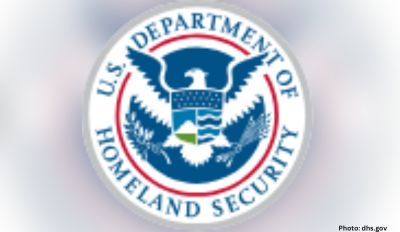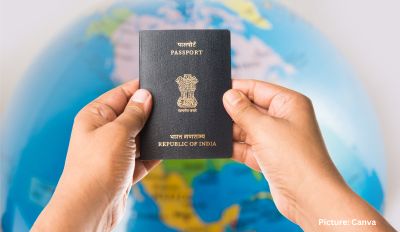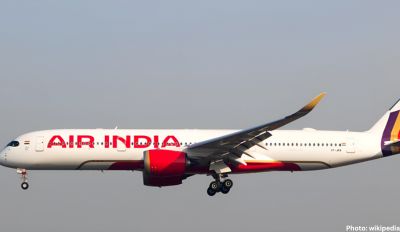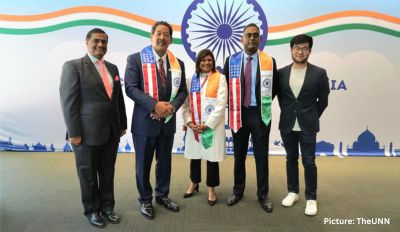As the countries around the world continue to work to protect people from COVID-19, the Biden Administration has released additional detail around implementation of the new international air travel policy requiring foreign national travelers to the United States to be fully vaccinated. This updated policy puts in place an international travel system that
is stringent, consistent across the globe, and guided by public health.
 Starting on November 8, non-citizen, non-immigrant air travelers to the United States will be required to be fully vaccinated and to provide proof of COVID-19 vaccination status prior to boarding an airplane to fly to the U.S., with only limited exceptions. The updated travel guidelines also include new protocols around testing. To further strengthen protections, unvaccinated travelers – whether U.S. Citizens, lawful permanent residents (LPRs), or the small number of excepted unvaccinated foreign nationals – will now need to test within one day of departure.
Starting on November 8, non-citizen, non-immigrant air travelers to the United States will be required to be fully vaccinated and to provide proof of COVID-19 vaccination status prior to boarding an airplane to fly to the U.S., with only limited exceptions. The updated travel guidelines also include new protocols around testing. To further strengthen protections, unvaccinated travelers – whether U.S. Citizens, lawful permanent residents (LPRs), or the small number of excepted unvaccinated foreign nationals – will now need to test within one day of departure.
Today, the Administration is releasing the following documents to implement these
requirements:
1) A Presidential Proclamation to Advance the Safe Resumption of Global Travel During the COVID-19 Pandemic;
2) Centers for Disease Control and Prevention (CDC) Orders on vaccination, testing, and contact tracing; and
3) Technical instructions to provide implementation details to the airlines and their passengers. With science and public health as our guide, the United States has developed a new international air travel system that both enhances the safety of Americans here at home and enhances the safety of international air travel. The additional detail released today provides airlines and international air travelers with time to prepare for this new policy ahead of the November 8 implementation date. As previously announced, fully vaccinated foreign nationals will also be able to travel across the Northern and Southwest land borders for non-essential reasons, such as tourism, starting on November 8. Additional detail on amendments to restrictions with respect to land borders will be available in the coming days. Travelers can find full details about today’s air travel announcement on the CDC and Department of State websites. A summary is below:
The White House has outlined new rules for foreign travelers to the US, as flight restrictions lift for the first time since the pandemic began in 2020.
- The plan to reopen the US border next month to foreign flights includes a requirement that almost all foreign visitors be vaccinated against Covid.
- The US travel ban has grown to include dozens of countries, including the UK, much of Europe, China and India.
- The travel industry has been asking for US President Joe Biden to lift the ban.
- Originally imposed by Donald Trump, the ban on flights from most foreign countries was extended when Mr Biden took power in January 2021.
- The rule bans most visitors from Brazil, China, South Africa, the UK, the 26 Schengen countries in Europe, Ireland, India and Iran.
The proclamation signed by Mr Biden on Monday, October 25th says that airlines will be required to check travelers’ vaccination status before they can board departing planes.
“It is in the interests of the United States to move away from the country-by-country restrictions previously applied during the Covid-19 pandemic and to adopt an air travel policy that relies primarily on vaccination to advance the safe resumption of international air travel to the United States,” Mr Biden’s proclamation says.
Fully Vaccinated Status:
• Starting on November 8, non-citizen, non-immigrant air travelers to the United States will be required to be fully vaccinated and to provide proof of vaccination status prior to boarding an airplane to fly to the U.S.
Proof of Vaccination:
• For foreign nationals, proof of vaccination will be required – with very limited exceptions – to board the plane.
- Passengers will need to show their vaccination status, and the airlines will need to:
Match the name and date of birth to confirm the passenger is the same person reflected on the proof of vaccination;
Determine that the record was issued by an official source (e.g., public health agency, government agency) in the country where the vaccine was given;
.Review the essential information for determining if the passenger meets CDC’s definition for fully vaccinated such as vaccine product, number of vaccine doses received, date(s) of administration, site (e.g., vaccination clinic, health care facility) of vaccination.
• The Biden Administration will work closely with the airlines to ensure that these new requirements are implemented successfully.Accepted Vaccines:
• CDC has determined that for purposes of travel to the United States, vaccines accepted will include FDA approved or authorized and World Health Organization (WHO) emergency use listed (EUL) vaccines.
• Individuals can be considered fully vaccinated ≥2 weeks after receipt of the last dose if they have received any single dose of an FDA approved/authorized or WHO EUL approved single-dose series (i.e., Janssen), or any combination of two doses of an FDA approved/authorized or WHO emergency use listed COVID-19 two-dose series (i.e. mixing and matching).
• More details are available in the CDC Annex here.Enhanced Testing:
• Previously, all travelers were required to produce a negative viral test result within three days of travel to the United States.
• Both nucleic acid amplification tests (NAATs), such as a PCR test, and antigen tests qualify.
• As announced in September, the new system tightens those requirements, so that unvaccinated U.S. Citizens and LPRs will need to provide a negative test taken within one day of traveling.
• That means that all fully vaccinated U.S. Citizens and LPRs traveling to the United States should be prepared to present documentation of their vaccination status alongside their negative test result.
• For those Americans who can show they are fully vaccinated, the same requirement currently in place will apply – they have to produce a negative test result within three days of travel.
• For anyone traveling to the United States who cannot demonstrate proof of full vaccination, they will have to produce documentation of a negative test within one day of departure.Requirements for Children:
- Children under 18 are excepted from the vaccination requirement for foreign national travelers, given both the ineligibility of some younger children for vaccination, as well as the global variability in access to vaccination for older children who are eligible to be vaccinated.
• Children between the ages of 2 and 17 are required to take a pre-departure test.
• If traveling with a fully vaccinated adult, an unvaccinated child can test three days prior to departure (consistent with the timeline for fully vaccinated adults). If an unvaccinated child is traveling alone or with unvaccinated adults, they will have to test within one day of departure.Limited Exceptions from the Vaccination Requirement:
• There are a very limited set of exceptions from the vaccination requirement for foreign nationals. These include exceptions for children under 18, certain COVID- 19 vaccine clinical trial participants, those with medical contraindications to the vaccines, those who need to travel for emergency or humanitarian reasons (with a US government-issued letter affirming the urgent need to travel), those who are traveling on non-tourist visas from countries with low-vaccine availability (as determined by the CDC), and other very narrow categories.Contact Tracing:
• The CDC is also issuing a Contact Tracing Order that requires all airlines flying into the United States to keep on hand – and promptly turn over to the CDC, when needed – contact information that will allow public health officials to follow up with inbound air travelers who are potentially infected or have been exposed to someone who is infected.
• This is a critical public health measure both to prevent the introduction, transmission, and spread of new variants of COVID-19 as well as to add a critical prevention tool to address other public health threats.











